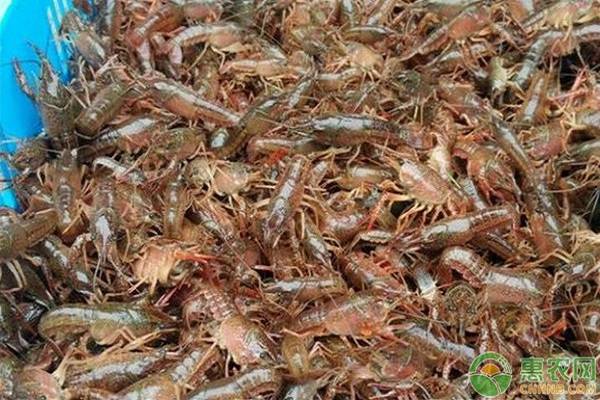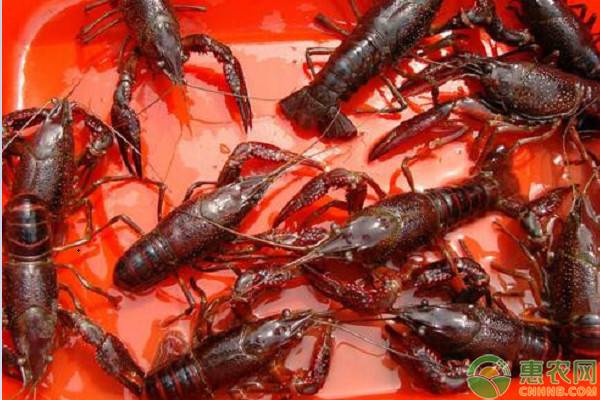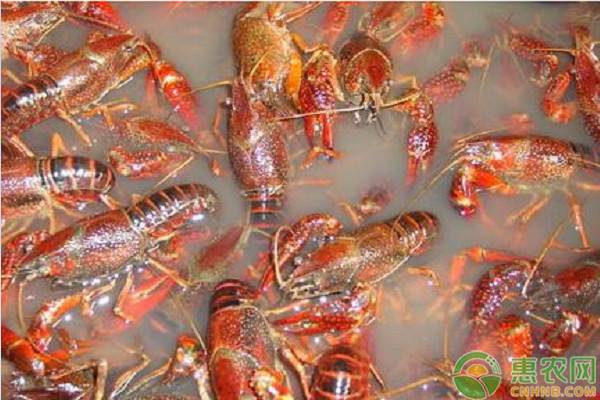Rice-shrimp continuous cropping is an efficient production mode based on the characteristics that freshwater crayfish are suitable for paddy field growth, and both paddy rice and freshwater crayfish are cultivated in rice fields to improve rice paddy production efficiency. The following is mainly to prepare for the preliminary preparation of the rice and shrimp continuous cropping mode.

First, rice paddy selection
Choose adequate water source, convenient irrigation and drainage, no flooding in rainy season, no dry season, fresh water and no pollution, pH value is 6.8 ~ 8.2, soil layer is deep, soil is fertile, soil is loam or clay loam, flat area is more than 5 acres Paddy fields; the rice fields are required to be open to the sun and the water circuit infrastructure is matched.
Second, rice field infrastructure transformation
The infrastructure of rice and shrimp in continuous cropping is not only to meet the needs of rice cultivation, but also to meet the breeding needs of freshwater crayfish; it can not only fill the whole row in time, but also maintain a certain amount of shrimp water body for a long time. Therefore, rice and shrimp must be prepared for supporting irrigation and drainage channels, culverts, pumps and other water conservancy facilities. Each paddy field preferably has an independent water conservancy facility portal, which does not affect each other, and the irrigation and drainage are separated and filled freely to ensure that rice and shrimp can grow normally. In addition, we must build an anti-escape facility for freshwater crayfish to achieve a double harvest of rice and shrimp. When the infrastructure is reconstructed, the area of ​​each rice and shrimp continuous cropping rice field is controlled at 5 to 50 mu, preferably 40 to 50 mu.

Excavation of shrimp ditch
The shrimp ditch excavated in rice fields is the main place for freshwater crayfish to forage and inhabit. It is the hiding place and activity place for freshwater crayfish in shallow irrigation, sun-dried field and fertilization. It is the best area for catching freshwater crayfish. Shrimp ditch generally consists of an annular groove, a field ditch or a temporary square tank. The construction types of shrimp ditch are mainly two types: annular groove type and ditch pool type. Excavation of shrimp ditch is generally carried out in the late winter and early spring, when the paddy field is dry and easy to operate. The fertile topsoil excavated can be scattered on the surface of the paddy field, and the middle and lower layers can be used to heighten and widen the field.
1 annular groove shrimp ditch. An annular groove with a width of 2 to 2.5 meters and a depth of 70 to 100 centimeters is excavated 1 meter from the inner side of the field. Then, according to the shape of the rice field, 3 to 5 strips of width 1.5 to 2 meters and depth 55 are excavated in the vertical and horizontal directions of the field. The 65 cm field ditch, the field ditch should be basically evenly distributed and communicate with the annular ditch. The field ditch can be dug into a "ten" shape or a "well" shape so that the freshwater crayfish enter the field for foraging, clam shelling, and increase the breeding space. It is also possible to dig the trench in the field and only dig the annular groove, but the width of the annular groove needs to reach 3 to 4 meters. The area of ​​the annular groove and the field ditch must account for 15% to 20% of the total paddy field area.
2 ditch pool type shrimp ditch. An annular groove with a width of 2 to 2.5 meters and a depth of 70 to 100 centimeters is excavated 1 meter from the inner side of the field, and then the circular groove is dug deep in the side of the rice field. The length and width are 15 to 20 meters and the depth is 1 to 1.2 m square pool. The purpose of the square pool is to raise freshwater crayfish parents in winter and to raise juveniles in spring. The area of ​​the annular groove and square pool needs to account for 12% to 15% of the total paddy field area.
2. Tian Hao transformation
Because freshwater crayfish have a burrowing habit in winter and summer, the rice stalks of rice and shrimp are required to be strong and strong, not leaking, and not easy to collapse. In case of heavy rainfall, it is not easy to be submerged or washed, and will not cause freshwater crayfish to escape. The freshwater crayfish collapsed because of a hole in the hole. Therefore, while excavating the shrimp ditch, the height of the field should be widened and reinforced. The height of the field should be 60-70 cm, the width of the top should be more than 50 cm, and the width of the base should be 1.3-1.5 m. The construction of the field is generally used. When digging the middle and lower layers of the soil when the shrimp ditch is dug, it is necessary to increase the height and widen it while tightening it.
3. Facility construction
1 inlet, drain. The inlet and outlet of rice-shrimp continuous cropping rice fields are located in the two diagonal ridges of the paddy fields, so that the rice field water flow is uniform and smooth, which is conducive to water exchange. The width of the inlet and outlet ports should be determined according to the size of the rice paddy and the amount of water in and out. The width of the inlet is 30 to 50 cm and the width of the outlet is 50 to 80 cm. The inlet and outlet ports shall be directly connected to the annular groove or square pool, and the bottom surface shall be 10 cm above the annular groove or square pool surface. In order to prevent flood disasters, one to three drainage outlets can be added to each paddy field, and a fence is set up.
2 fences. To prevent harmful aquatic organisms and garbage from entering the rice fields and to prevent freshwater crayfish from escaping, fences should be installed at the inlet and outlet. The material for the fence can be made of bamboo foil, metal mesh or chemical fiber mesh, and the aperture of the fence is 0.2 cm. The fence should be curved, and the convex surface greets the water flow to increase the water area and disperse the impact of the water. The height and width of the fence should be matched with the size of the inlet and outlet. The upper end should be 30 to 40 cm higher than the field, the lower end should be inserted into the mud layer 30 to 40 cm, and the left and right sides should be embedded in the field for 20 cm; the width should be the inlet and outlet. In accordance with the fit, one piling on each side of the fence against the field, making the fence after installation more sturdy. At the same time, a nylon with a diameter of 0.25 mm or 60 mesh was installed on the inside of the water inlet fence and outside the water outlet fence to make a long-sleeve filter mesh with a length of about 1.5 meters.
3 anti-evasion wall. In order to prevent freshwater crayfish from escaping from rice fields and to facilitate irrigation and drainage of rice fields, anti-evacuation walls should be built around the inner side of the field. Firstly, the inner slope of the field is covered with a nylon mesh. The lower part of the nylon mesh is buried in the soil by 20 to 30 cm, and the nylon mesh is 70 to 80 cm higher than the field. The wooden pile or bamboo pole is vertically supported every 1.5 m to fix the nylon net part. The plastic film on the inner side of the nylon net from the ground to the upper seam is 30-40 cm wide, which can prevent the freshwater crayfish from climbing and escaping, and prevent the hostile creatures such as rats, snakes and frogs from entering the rice fields.
4 lines of ditch. If the rice and shrimp continuous cropping is carried out in the Zhengchongtian of the hilly mountainous area, the flooding should be carried out according to the maximum flood flow on the side of Zhengchongtian. Under normal circumstances, the width of the flood ditches is 1 to 1.2 m and the depth is 1.2 to 1.5 m. The Zhengchongtian with large flood volume can widen and deepen the flood ditch according to local conditions; the ditch bottom of the flood ditch should be lower than Zhengchong The surface of the road is more than 30 centimeters, and the dike should be higher than the field of the positive Chongtian, so that the flood will not overflow into the paddy field to avoid flooding.

5 scaffolding shade. When the temperature is hot in summer, too high water temperature will affect the normal growth of freshwater crayfish. Therefore, in the spring, a canopy of 1.8 to 2 meters high should be set around the rice fields, especially on the west side, and large vine vegetables such as loofah, bitter gourd and lentils should be planted in time to cool the paddy fields in summer.
Third, clearing the trench disinfection
Before the rice slag ditch enters the water, the floating soil in the annular ditch and the field ditch should be cleaned to repair the collapsed ditch wall. At the same time, 75 kg of quicklime or 7.5 kg of bleaching powder per acre of shrimp ditch is 1000-1500 kg of water, and the whole ditch is splashed after dissolving. In order to kill wild fish, enemy organisms, pathogens and other harmful organisms. 7 to 10 days after disinfection, after the toxicity disappears, the water can be drained into the shrimp ditch, so that the water depth of the shrimp ditch reaches 50-80 cm. Note that the water should not be flooded in the early stage.
Fourth, the application of base fertilizer
After the rice paddy shrimp ditch enters the water, 50 kg of compound fertilizer with 15% nitrogen, phosphorus and potassium content and 60 kg of ammonium bicarbonate are applied per mu of shrimp ditch, and then 1000-1500 kg of decomposed pig manure or cow dung is added to cultivate bait organisms.
Fifth, planting water plants
Freshwater crayfish have the habit of inhabiting the water grass. Therefore, the sphagnum or tilapia, the algae, the eucalyptus, the sage, the sage, the water hyacinth, etc. should be planted in the ditch as soon as possible after the shrimp ditch is applied to the base. Water grass, or plant bamboo leafy vegetables along the shrimp ditch. The area of ​​the water grass generally accounts for 30% to 50% of the surface area of ​​the shrimp ditch. Plant the water plants as far as possible to avoid concentration. Conditional can also stock a part of the snails in the ditch, let it grow naturally, and prepare a large amount of palatable natural bait for freshwater crayfish.
6. Rice planting
Selection of rice varieties with strong resistance to diseases and insects, good fertility, stalks, hard lodging, high yield, and rice grown as rice and shrimp in rice fields, especially rice varieties with strong resistance to pests and diseases can reduce the application of pesticides. Conducive to the growth and reproduction of freshwater crayfish. The rice planting fields are generally fertilized and cultivated in the middle and late May, and transplanted in the late May to early June; rice seedlings are first transplanted in the field after planting the seedlings, and 2 to 3 days before planting, the seedlings are applied once efficiently. Disease prevention and pest control; plant spacing is 16 to 17 cm, and the planting density should be increased around the field to exert the marginal advantage.
For the wonderful pictures and hot comments about the latest market of crayfish cultivation technology, you may be interested in the following recommended contents, welcome to read.
Sweeteners Fruit Powder,Luo Han Guo Extract,Natural Sweetener Monk Fruit Extract,Juice Powder Extract Sweet Fruit Juice
Fufeng Sinuote Biotechnology Co.,Ltd. , https://www.sntextract.com